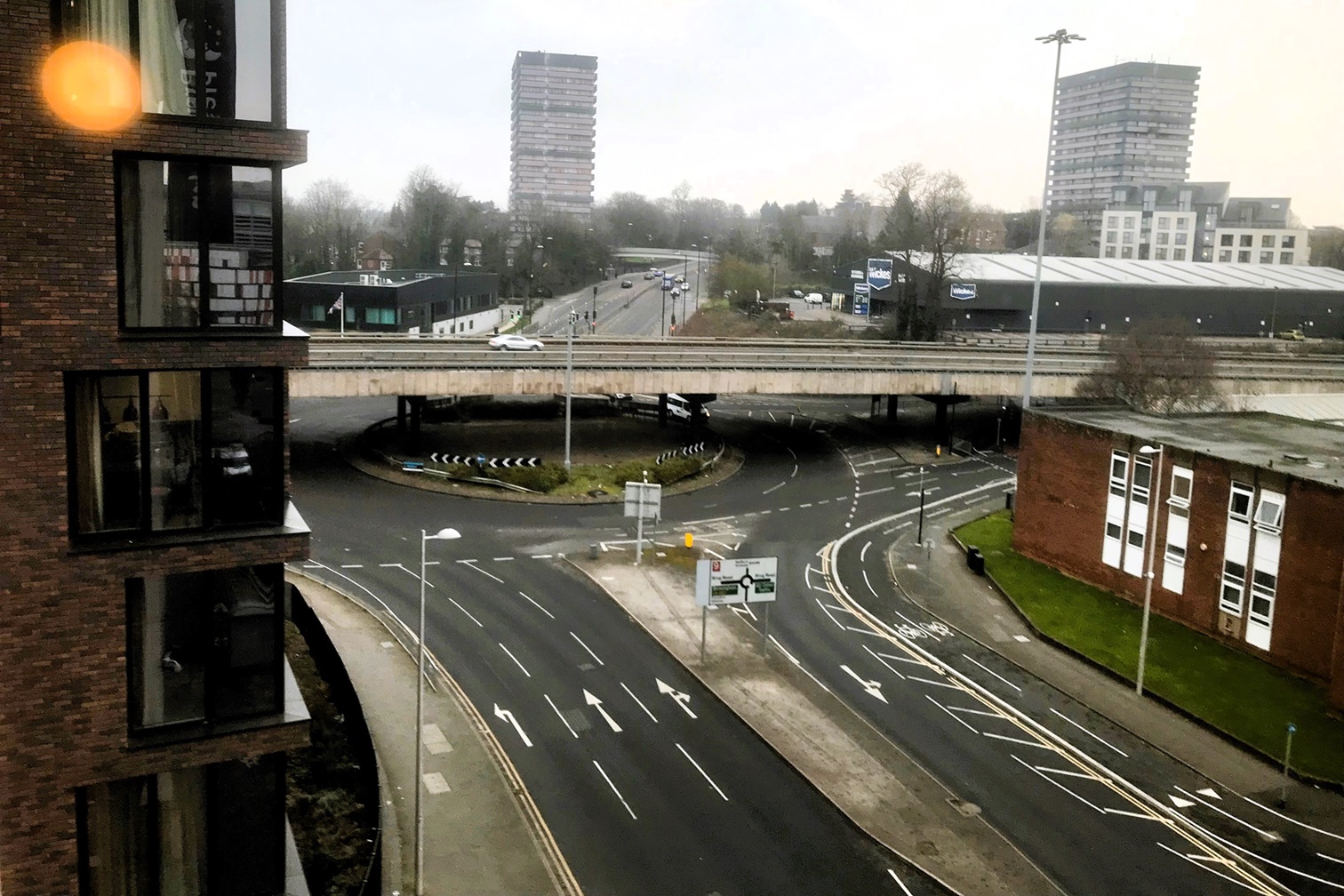A Coventry public official writes anonymously about the restitched future he would like for his city.
I often ask myself, what might have been had Coventry taken a different planning approach after World War II. Where might we be now? How might we reverse some of the twentieth century’s planning decisions? It is a question for many towns and cities across the UK designed or re-designed around the motor vehicle. Coventry owes its post war boom to the car industry. As a Coventrian I am very proud of what the city achieved. But there was a price to pay.
Growing up in the city during the 80’s and 90’s you hardly knew you lived in a once famous medieval city. The city I grew up in celebrated urban brutalism. The influence of Le Corbusier was easy to spot. But in between the concrete glimmered the medieval buildings reminding you that Coventry had a past as well as a present. Donald Gibson designed a futuristic take on pedestrianisation. I’ve always believed it to be misunderstood. It was groundbreaking, the first pedestrianised city centre, and a beacon of hope for urban renaissance as the city thrived in the post war boom years. It allowed its citizens to walk through the city centre in an environment which put people first.
However, there was a noose around the city’s centre severing its links to the rest of Coventry. The ring road was designed to move traffic around the tight city centre. But it also severed most residents from the city’s heart, preventing safe walking or cycling and unintentionally creating places which no one wanted to pass through or visit. Wide swathes of black tarmac and large concrete structures supporting the ring road dominate most vistas into and out of the city’s centre. The engorged belt of tarmac and concrete is a showpiece in how to use space poorly. Sections are ten lanes wide, not to mention the supporting structures running as a highline around the city centre.
I have often found myself looking at the ring road asking if we might put it on a diet. What if the tarmac was reduced to four lanes? What if it ran at ground level? Would you need such huge slip roads. What if six lanes were restitched, replaced with a tight tissues of streets and squares helping Coventry to deliver its housing shortage without spilling unsustainably into the greenbelt? The ring road’s land is prime sustainable living space. People might reconnect to their city’s heart. Street trees, boulevards and garden squares might replace unloved spaces beneath the ring road. The city centre could breathe and grow, enriching the city and its diversity.
This is possible. The past’s planning decisions can be changed but we should also understand and accept the intentions of what was done in the past and learn from them. This is how we grow as people. Rotterdam has shown what it possible, accepting faults and making bold choices by removing sections of ring road and giving space back to people. Coventry can learn from this. We should seek out the politicians, urban planners and engineers who made this happen.
I believe that a bold approach, unleashing Coventry’s potential, is only possible by beautifying the ring road, taking inspiration from Vienna’s Ringstrasse. The concept would remain but in a very different way, reusing space for bikes, busses and, I would hope, a circular tram as in so many beautiful and prosperous European cities. The ring road constrains so much of what can be delivered and uses space far beyond the capacity of vehicles it serves. We should also factor in the benefits this would bring to neighbourhoods and homes which currently gaze at a wall of concrete. They would be freed, linked to their city rather than severed. Sight lines across the city would be forever improved. Dark places with no natural light would be removed; health and prosperity would be improved, crime reduced and social mobility enhanced where it is most needed. When building new roads or places, too often very little emphasis is given to people and how they interact with a place. We value solely the movements and free flow of vehicles and whether a refuse truck can access the street without straying into the adjacent lane.
There is a better way. I believe in a place where people’s health, prosperity and happiness come first. We rely too much on erroneous traffic modelling and too little on the power of place. We should strive to be the best that we can, learning from previous ideas not just repeating them. Let’s restitch!
The writer is a public official born, raised and working in Coventry.


